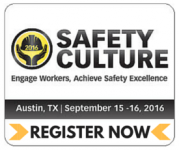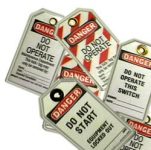Category: Special Topics in Safety Management
Safety is a process, and as such, needs to be managed. This section offers resources to create a viable safety program, sell it to senior management, train supervisors and employees in using it, and then track and report your progress. Look also for ways to advance your own skills in these areas, both for your current job, and those that follow.
By John E. Hall With much of the country in line for more high temperatures as summer winds down, employers should be mindful of employees’ exposure to heat hazards on the job. Although the Occupational Safety and Health Administration (OSHA) has no heat standard, the agency has become increasingly willing to cite employers for employees’ […]
By Eric Svendsen, PhD, Principal, safetyBUILT-IN One thing successful safety leaders do to help build a stronger safety culture in the organization is to build levels of employee engagement. An engaged employee thinks and acts like an owner, and because of that, they not only remain safer on the job, but they are also much […]
According to the National Oceanic and Atmospheric Association (NOAA), about 25 million cloud-to-ground lightning strikes occur each year in the United States. More than 400 people are struck by lightning every year; about 70 die, while others are left with permanent neurological damage.
Recently, we received the following question from a subscriber: What does OSHA say about initial entry into an area with a suspected gas leak of anhydrous ammonia of unknown quantity and the use of an SCBA?
Your summer checklist might include signing the kids up for swimming lessons and making reservations for a beach getaway. But if your employees work outside, preparations should also include readying them for exposure to the heat. Get important reminders here.
It’s common knowledge that working with garbage is difficult and smelly. But a new report reveals that commercial waste work is among New York City’s most dangerous jobs.
When it comes to heat stress, you know what you need to do to protect workers, right? Eight ounces of cool water an hour, frequent breaks in the shade, planning heavy work for cooler times of day … You’ve got this.
Recently, we received the following question from a subscriber:
Recently, one of our subscribers asked the following question:
By June 1, 2016, you must be in full compliance with OSHA’s HazCom GHS rule. What does the final phase-in deadline require? Watch this video to find out and get a free SDS toolbox talk!










